Who’s the Best Webflow Partner for Startups on a Tight Timeline?
Simran Kataria

Web design has always been an evolving field. What began as basic HTML hand-coding in the early '90s quickly progressed into CSS styling, CMS platforms like WordPress, and drag-and-drop builders. But in 2025, a new chapter has emerged—one where artificial intelligence takes center stage.
Designers no longer need to sift through endless color palettes or tediously adjust every layout break. AI-powered design tools can now handle the repetitive, mechanical parts of building websites, allowing creatives to focus on the big-picture ideas.
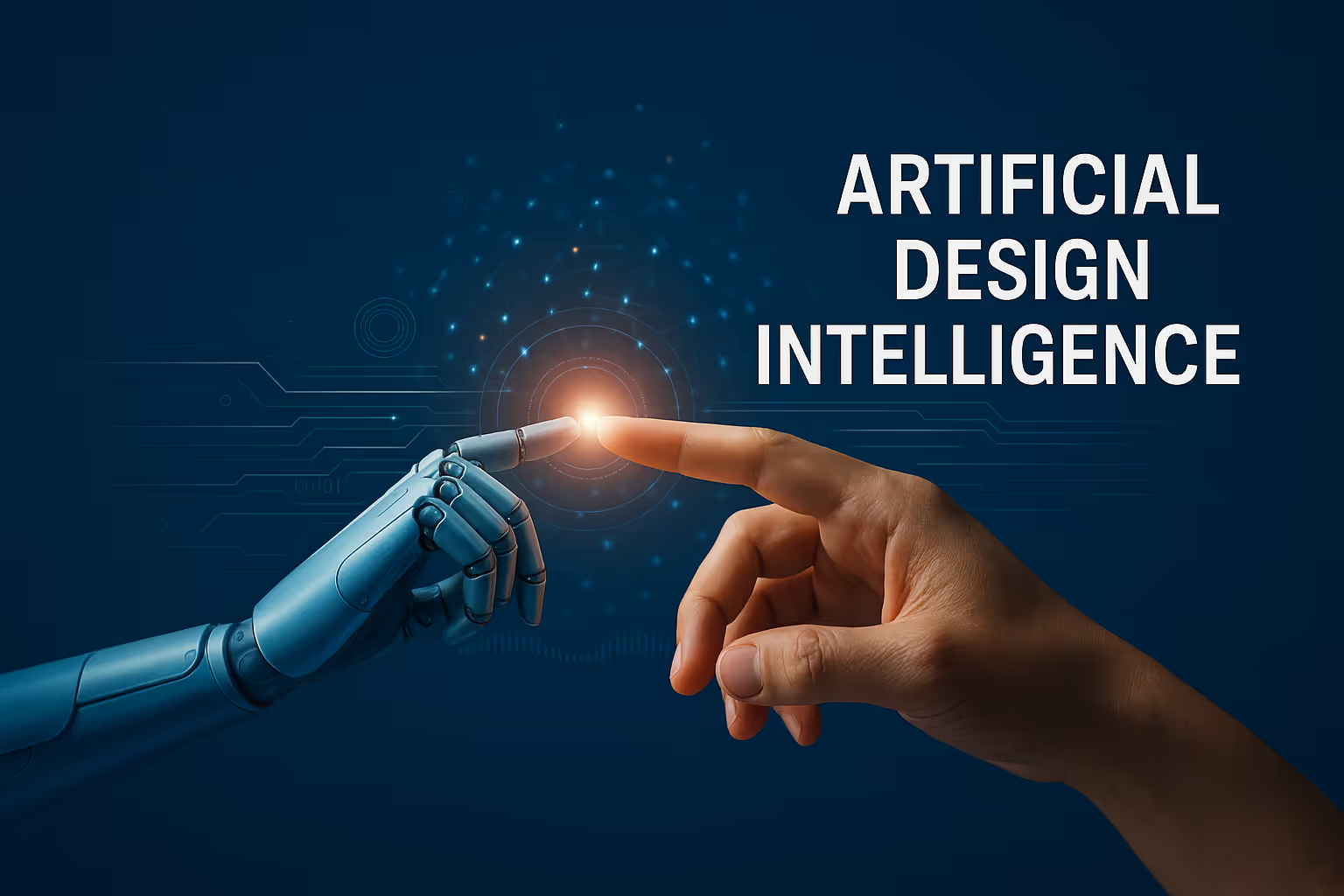
The rise of Artificial Design Intelligence (ADI) has empowered both non-coders and professionals to create responsive, visually appealing websites in record time. Tools like Adobe Sensei, ChatGPT, and Midjourney offer a taste of what's possible. But among them all, Webflow is setting the gold standard. With its seamless AI integrations and powerful design system, Webflow offers the flexibility of custom code without the complexity.
According to a recent CX Today article citing Gartner, by 2026, around 70% of organizations will have acquired a composable Digital Experience Platform (DXP) solution. This shift reflects the growing demand for modular, AI-enhanced web tools that can adapt to evolving user needs. For designers and businesses alike, the message is clear: embracing AI in digital design isn’t just an option—it’s becoming a competitive necessity.
Let’s break down the 10 core ways AI is revolutionizing website design, grouped into five thematic categories.
AI tools can generate wireframes, page layouts, and theme options instantly based on user prompts. Instead of starting with a blank canvas, designers get a structured draft that saves hours of preliminary work.
Platforms like Midjourney and DALL·E allow designers to generate logos, product images, hero banners, and even complete landing pages from a single text prompt. For example, using a prompt like “modern homepage for a travel blog, pastel theme, mobile-friendly” can yield stunning visuals in under a minute.
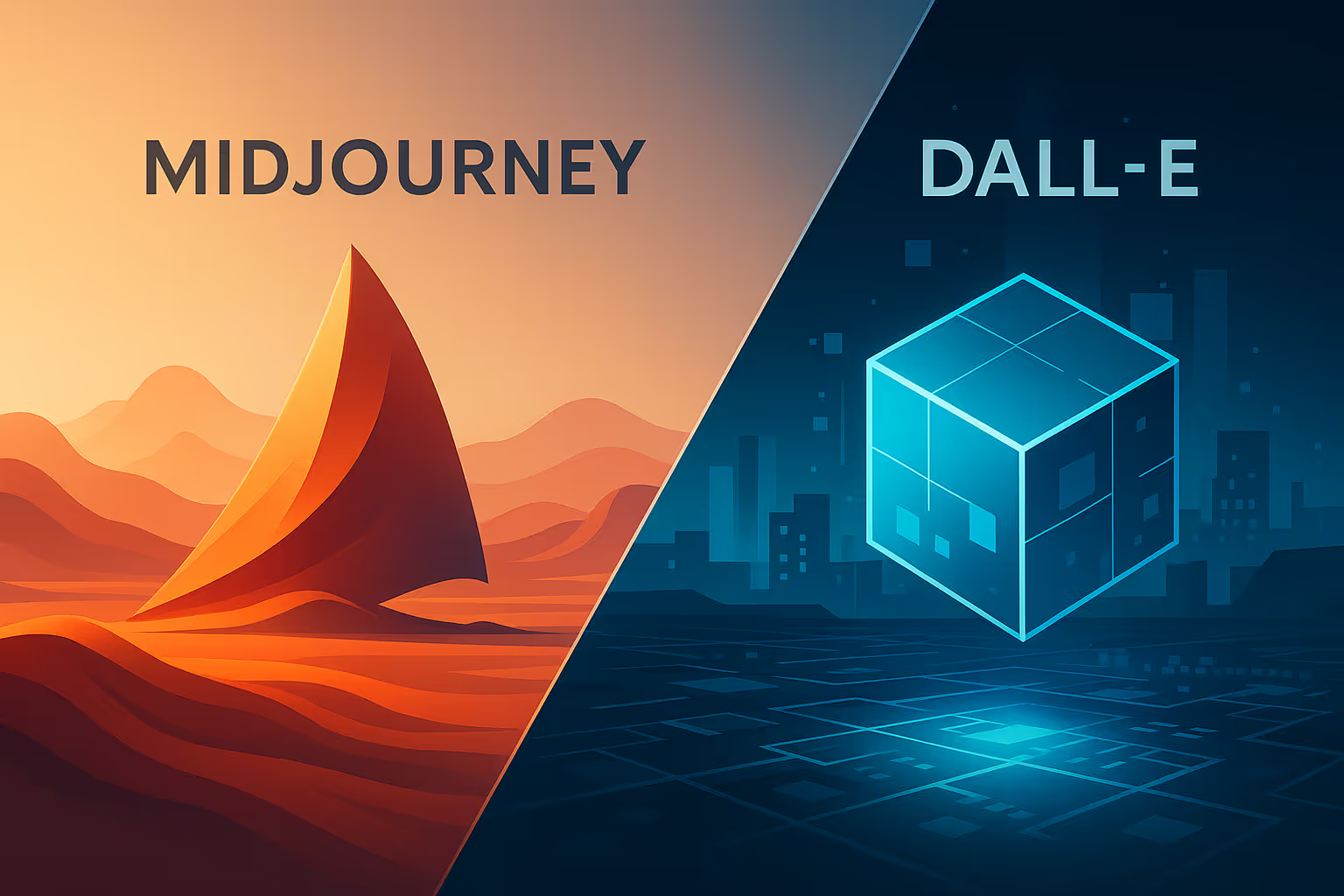
Placeholder texts like “Lorem Ipsum” are now obsolete. Tools like ChatGPT and Hypotenuse can craft compelling website copy tailored to specific industries, audiences, and SEO goals. This makes it easier for businesses to launch with content that's both on-brand and optimized for discoverability.
AI-backed tools such as Clearscope or MarketMuse analyze top-performing content across the web and provide optimization suggestions—including keyword density, structure improvements, and link building tactics—directly within your design environment.
AI analyzes user behavior and dynamically adjusts layouts, CTAs, and color themes to improve engagement. A returning user might see a different homepage layout than a first-time visitor, boosting retention and conversions.
AI-powered bots like Drift and Intercom offer real-time, contextual customer support. These tools can resolve queries, guide purchases, and collect feedback—all without human intervention. This enhances the user experience and reduces support costs.
Tools like GitHub Copilot and ChatGPT can write CSS or JavaScript snippets on command, dramatically speeding up prototyping. AI can also debug issues in real-time, making the coding process smoother for developers.
AI-driven platforms like AccessiBe ensure websites meet WCAG standards for accessibility. Meanwhile, visual regression testing tools powered by AI can detect changes in layout across browsers and devices, preventing UI issues before they go live.
Imagine a tool that knows what you’re trying to design even before you do. AI-powered platforms now suggest color combinations, UX flows, and layout structures based on user goals, industry data, and current trends.
Instead of iterating manually, designers can generate dozens of concepts with AI, then refine the best ones. This allows for quicker client approvals and more diverse design choices.
At its core, artificial intelligence in web design leverages machine learning, natural language processing, and large datasets to make decisions, generate designs, and personalize user experiences. But how exactly do these technologies come together in a design environment?
Natural Language Processing (NLP) allows AI systems to understand user prompts and generate text or layouts based on human-like context. When you input a prompt like “minimalist portfolio homepage with pastel tones,” the AI deciphers it to build a wireframe, suggest imagery, and even generate relevant content.
Machine Learning (ML) continuously improves AI performance. For example, when users engage more with certain layout styles or visual elements, the AI adjusts its recommendations accordingly. Over time, this results in smarter design decisions tailored to real-world behaviors.
Predictive analytics is another cornerstone. By studying user interaction data, AI can forecast what content or layout will resonate best. This is especially powerful for eCommerce and SaaS websites, where understanding user intent can lead to major gains in conversion rates.
While many platforms claim to use AI, very few truly integrate it into a flexible and production-ready environment. This is where Webflow outshines the rest.
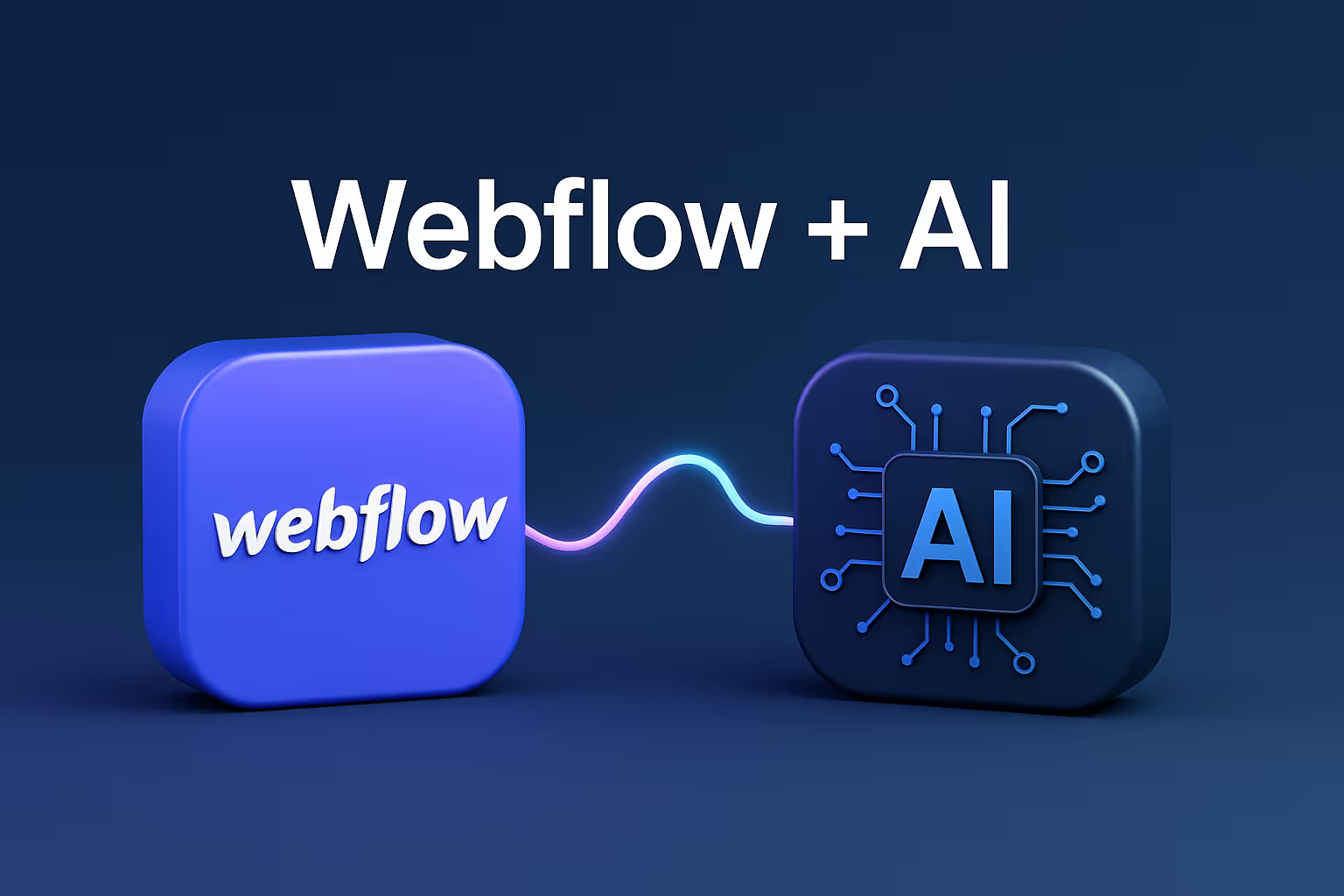
Webflow not only automates repetitive design tasks but also gives designers full control over the outcome. Its AI-enhanced capabilities help generate layouts, optimize responsiveness, and even write code blocks—all while maintaining a clean, intuitive visual builder. With upcoming integrations from platforms like Relume and native AI features on the horizon, Webflow continues to stay ahead of the curve.
More importantly, Webflow isn't just about automation. It's about smart collaboration. Designers can hand off structured, scalable designs to developers or clients without needing to export code, making the transition from concept to live website incredibly smooth.
In 2025, the capabilities of AI in website design go far beyond basic automation. Today’s AI-driven tools are deeply embedded across the design process—from ideation to deployment—delivering not only speed but a higher quality of output. Let’s explore the key features that are reshaping how websites are being built.
One of the most transformative features of AI in design is its ability to generate entire website layouts based on a few input parameters. Tools like Webflow, in tandem with AI plugins such as Relume, can convert a text prompt into a ready-made wireframe.
Instead of dragging and dropping components manually, designers can start with AI-generated templates that are structurally sound, mobile-responsive, and even optimized for performance. For instance, Webflow users can input something as simple as “eCommerce homepage for a minimalist fashion brand” and get a layout with product grids, hero sections, testimonials, and more—automatically styled with brand-friendly colors and typography.
Visuals remain a cornerstone of great design, and AI tools have made it dramatically easier to create stunning images on demand. Platforms like Midjourney and DALL·E generate unique, copyright-free illustrations, product visuals, and even logos in seconds.
Consider the case of a startup needing lifestyle images for a fitness brand. Instead of searching through expensive stock libraries, designers can prompt Midjourney with: “modern fitness lifestyle, urban background, diverse group of people, vibrant color palette.” The AI delivers multiple image variations that can be refined or stylized further—all within minutes.
This process not only saves time and licensing costs but ensures the visuals align perfectly with the brand’s tone and message.
Choosing fonts and color palettes used to require hours of trial and error. Now, AI tools analyze brand data, user preferences, and industry trends to suggest optimal combinations automatically.
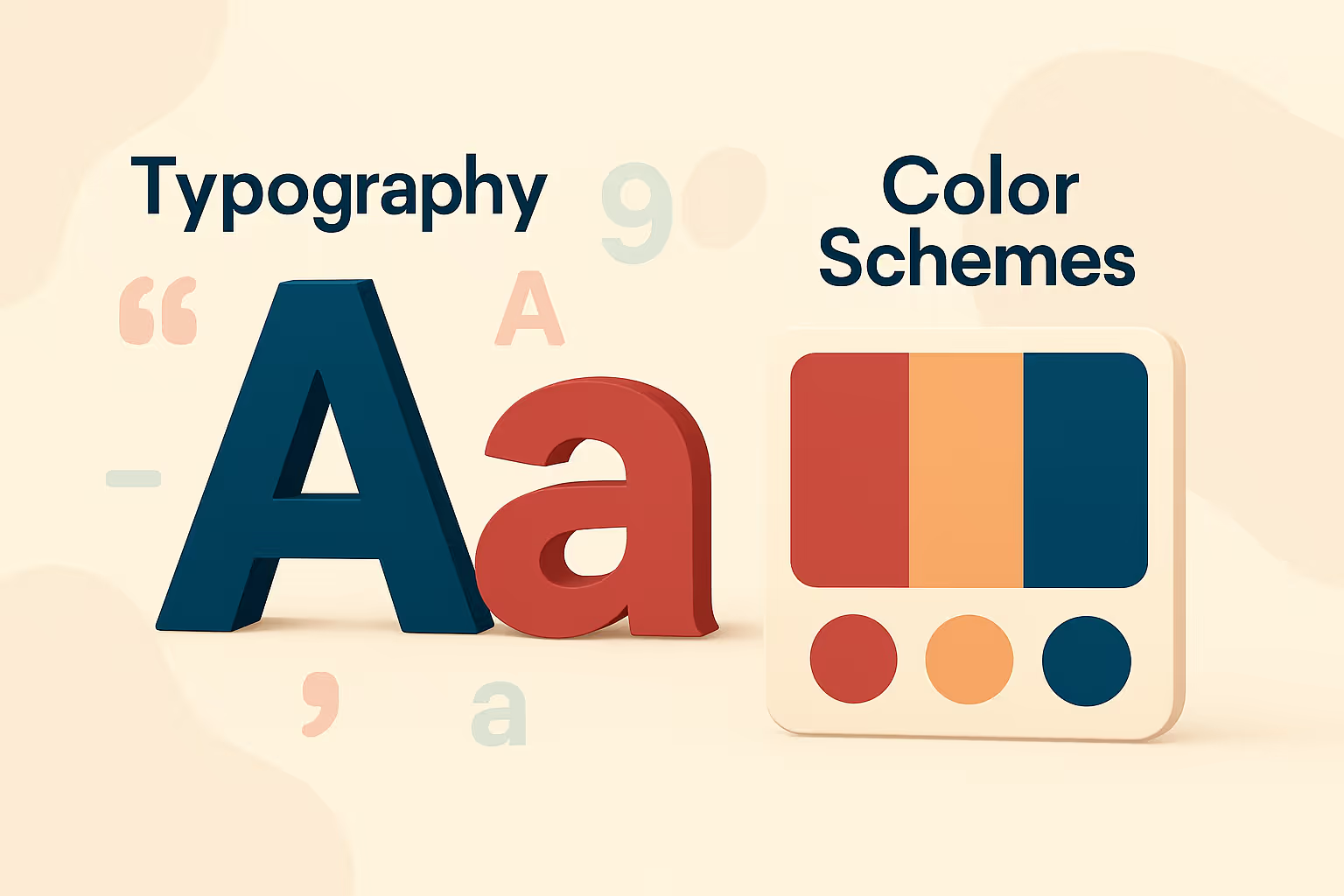
Design platforms now incorporate intelligent algorithms that adjust font weight for readability or recommend contrast-friendly color schemes that improve accessibility and visual harmony. Webflow's integration with design systems ensures that once a smart style is applied, it remains consistent across the site—no manual rework needed.
Design and content go hand in hand. That’s why AI-powered writing assistants like ChatGPT, Jasper, and Hypotenuse have become staples in the designer’s toolkit.
These tools can create landing page copy, product descriptions, FAQs, blog intros, and even CTAs—customized to specific tones, industries, and SEO goals. Rather than filling templates with generic filler, designers now launch sites with content that resonates with real users and supports performance objectives.
For businesses with multilingual audiences, AI translation tools such as DeepL offer accurate, culturally sensitive translations, streamlining global site rollouts.
Together, these AI-powered features are not only increasing efficiency but also enabling smaller teams and solo entrepreneurs to achieve professional-grade design outcomes.
A great website isn’t just visually appealing—it’s intuitive, personalized, and responsive to user behavior. AI is now making that possible in real-time, turning static pages into dynamic experiences that adapt to the needs and preferences of each visitor.
AI enables websites to respond to individual users the moment they land on the page. Through machine learning algorithms, a site can detect a visitor’s location, device type, browsing behavior, or even past purchases to deliver customized layouts, messages, and product recommendations.
For instance, an eCommerce website built on Webflow can integrate AI tools to show different product bundles to returning users based on their last session. A first-time visitor might see a welcome discount, while a loyal customer might be nudged toward a loyalty program.
This kind of personalization boosts engagement and conversion. A study by Epsilon found that “80% of consumers are more likely to make a purchase when brands offer personalized experiences”.
Another major advancement in user experience is the use of AI-powered chatbots. These virtual assistants can answer questions, guide users through the site, schedule consultations, and even close sales—all without involving human support.
Unlike traditional bots that operate on rigid scripts, modern AI chatbots use natural language processing to understand context and sentiment. Tools like Intercom, Drift, and Landbot offer seamless integration into platforms like Webflow, allowing even small teams to deliver 24/7 support and engagement.
This not only enhances the user journey but also reduces operational costs for businesses. Users get what they need faster, and site owners free up time for strategic work.
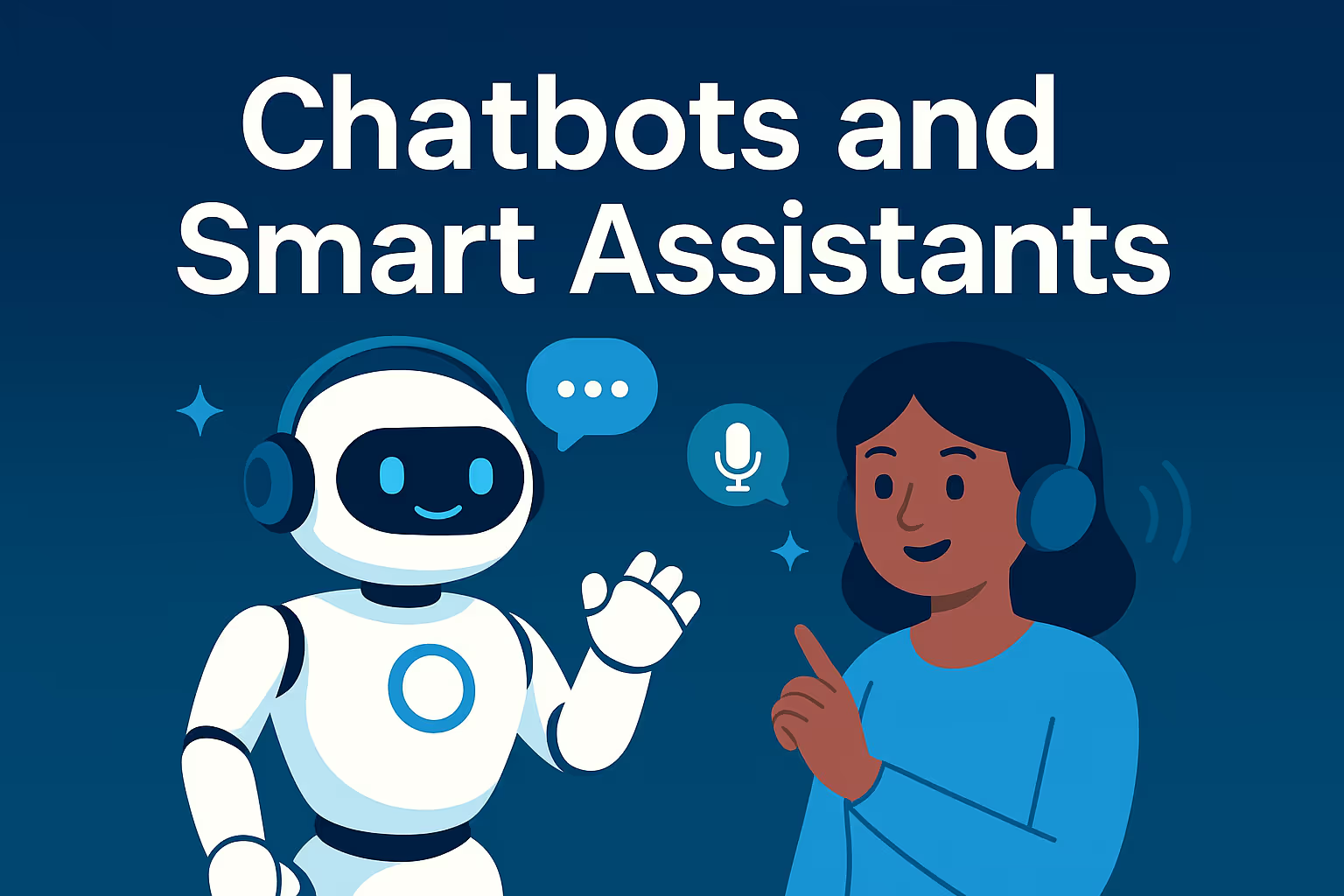
Advanced AI systems are beginning to alter UX elements based on live user data. For example, if a visitor hesitates on a product page, the site might automatically offer a discount pop-up or change the CTA wording to address potential objections. These subtle adaptations, powered by AI models trained on thousands of behavioral data points, make digital experiences feel more responsive and human-like.
Together, these tools are driving a shift from static to smart web experiences—ensuring users find what they need faster, stay longer, and return more often.
One of the most significant advantages of using AI in website design is the enormous boost it provides to speed, efficiency, and scalability. Tasks that once took days—or required entire teams—can now be completed in a fraction of the time, without sacrificing quality.
AI excels at handling repetitive and rule-based processes. Whether it’s resizing images for responsive layouts, generating alt text for accessibility, or creating multiple layout versions for A/B testing, AI streamlines the grunt work.
Tools integrated into platforms like Webflow allow designers to automate these tasks while maintaining full creative control. A single prompt can produce a polished homepage, complete with hero sections, testimonial sliders, and contact forms, which can then be adjusted and refined instead of built from scratch.
This automation dramatically reduces the time from concept to launch. A website that might have taken a week to develop manually can now be completed in just a day or two, with greater consistency and fewer errors.
AI also accelerates the prototyping phase. Instead of wireframing each page manually, designers can use AI to generate prototypes based on high-level goals or user personas. These prototypes are often interactive, responsive, and aligned with common UX standards.
Webflow, in particular, supports rapid prototyping by letting users build real, production-ready components right within the design interface—no need to switch between mockup and development tools. Combined with AI-generated wireframes or design suggestions, teams can validate ideas quickly and move to testing within hours.
As websites grow—adding pages, user flows, or integrations—maintaining consistency becomes a challenge. AI helps manage design systems at scale, suggesting reusable components, enforcing branding guidelines, and even predicting design inconsistencies before they go live.
This is especially valuable for agencies and SaaS companies managing large content libraries or multisite environments. AI can ensure that new landing pages or product pages follow best practices without constant manual oversight.
Overall, AI brings both speed and structure to web design, giving teams the ability to build smarter, scale faster, and deliver better user experiences—all with fewer resources.
In the past, optimizing a website for search engines and accessibility often felt like separate disciplines—handled only after the core design was finished. In 2025, that’s no longer the case. AI is bringing SEO and accessibility into the design process from the start, making it faster, smarter, and more effective.
Search engine optimization (SEO) is about more than just keyword stuffing. It's about creating content that is relevant, structured, and authoritative. AI tools like Clearscope, MarketMuse, and SurferSEO analyze the top-performing pages on Google and provide detailed recommendations that go far beyond keywords.
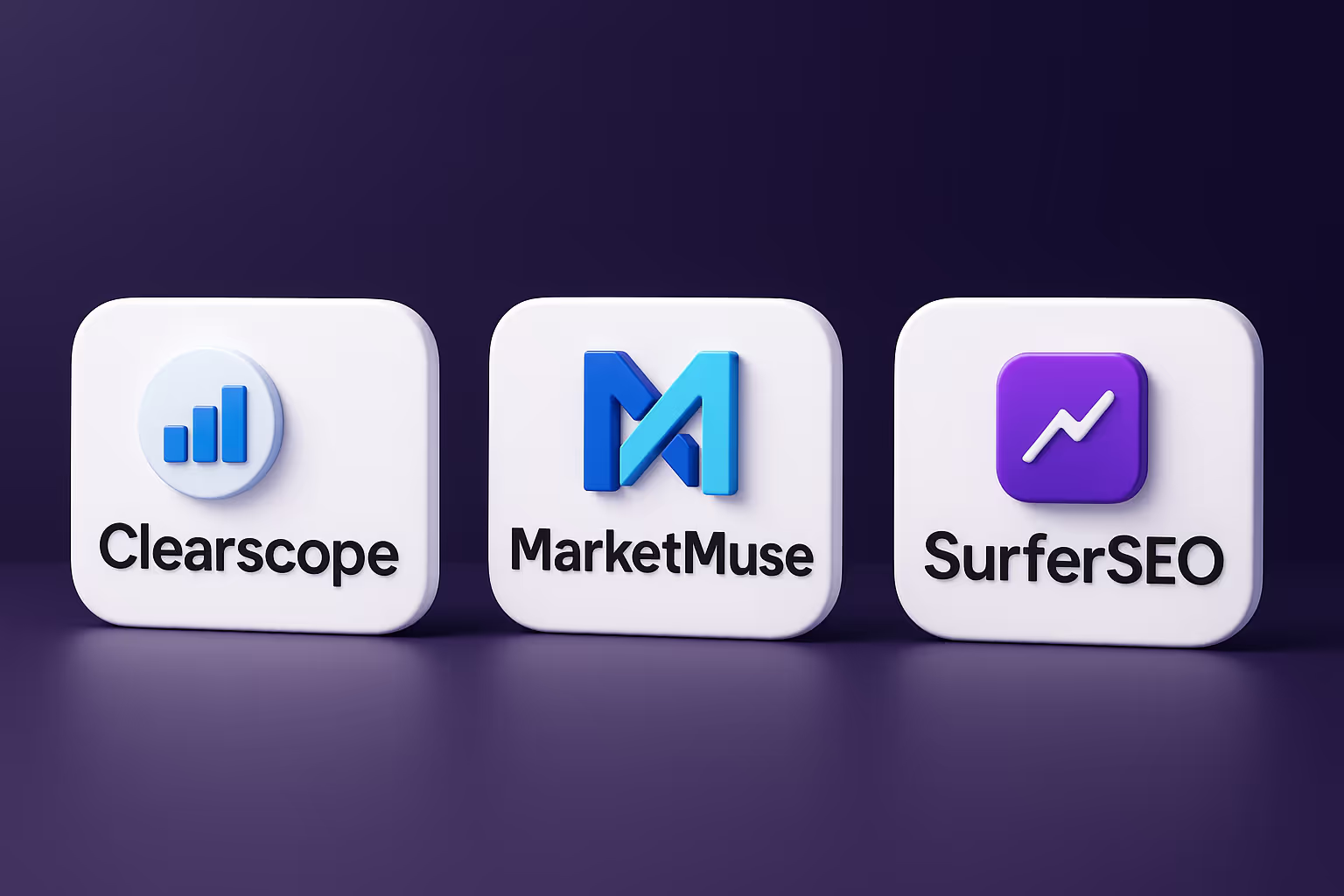
These platforms suggest content headings, subtopics, internal link structures, and even paragraph lengths—based on what is working in your niche. Integrated with CMS systems like Webflow, these insights allow content designers to make real-time improvements as they write and build.
For example, when creating a product landing page, an AI-driven assistant might suggest reordering sections to better match user intent, rewriting CTAs to boost click-through rates, or identifying missing semantic keywords that could improve rankings.
This data-driven approach ensures your website isn't just beautiful—it’s discoverable.
Accessibility isn’t just a best practice—it’s a legal and ethical requirement. With over 1 billion people globally living with a disability, ensuring your site is usable for everyone is critical.
AI tools are making this easier by scanning pages in real-time to identify issues such as low color contrast, missing image alt tags, unreadable fonts, or non-compliant navigation. Platforms like AccessiBe or AudioEye offer automated solutions that continuously monitor accessibility and adapt content for users with screen readers or motor impairments.
In Webflow, designers can now integrate these tools directly into their projects, allowing them to create compliant experiences without needing to be accessibility experts themselves. AI even suggests changes as you design, reducing the chance of overlooking critical issues.
By embedding SEO and accessibility into the build process through AI, websites can launch faster and perform better—both in search engines and for all types of users.
With dozens of platforms now offering AI-powered features, choosing the right website builder can feel overwhelming. While many tools promise AI integrations, few deliver true usability, flexibility, and design control. In 2025, the most successful builders are the ones that strike a balance between intelligent automation and creative freedom.
Here’s how the top players stack up—and why Webflow remains the standout choice.
Webflow isn’t just another drag-and-drop builder with a few AI features slapped on. It’s a fully developed platform tailored for designers and developers who want power, precision, and automation in one place.
Where Wix and Jimdo offer guided setup flows that generate quick templates from prompts or surveys, Webflow provides actual creative control. You can generate layouts or use AI-generated components via Relume and still fine-tune every interaction, every breakpoint, and every element with pixel-level accuracy.
Framer is a close competitor, particularly appealing to UI/UX designers, but it often requires manual finishing and lacks the integrated CMS and hosting power that Webflow offers. And while Chariot offers “vibe coding” through chat interfaces, it’s still too experimental for professional use cases.
Webflow’s ability to scale—from simple landing pages to full SaaS platforms—combined with its AI-enhanced design tools, makes it the best all-in-one choice for professionals in 2025.
That said, there are specific scenarios where other AI website builders may still shine:
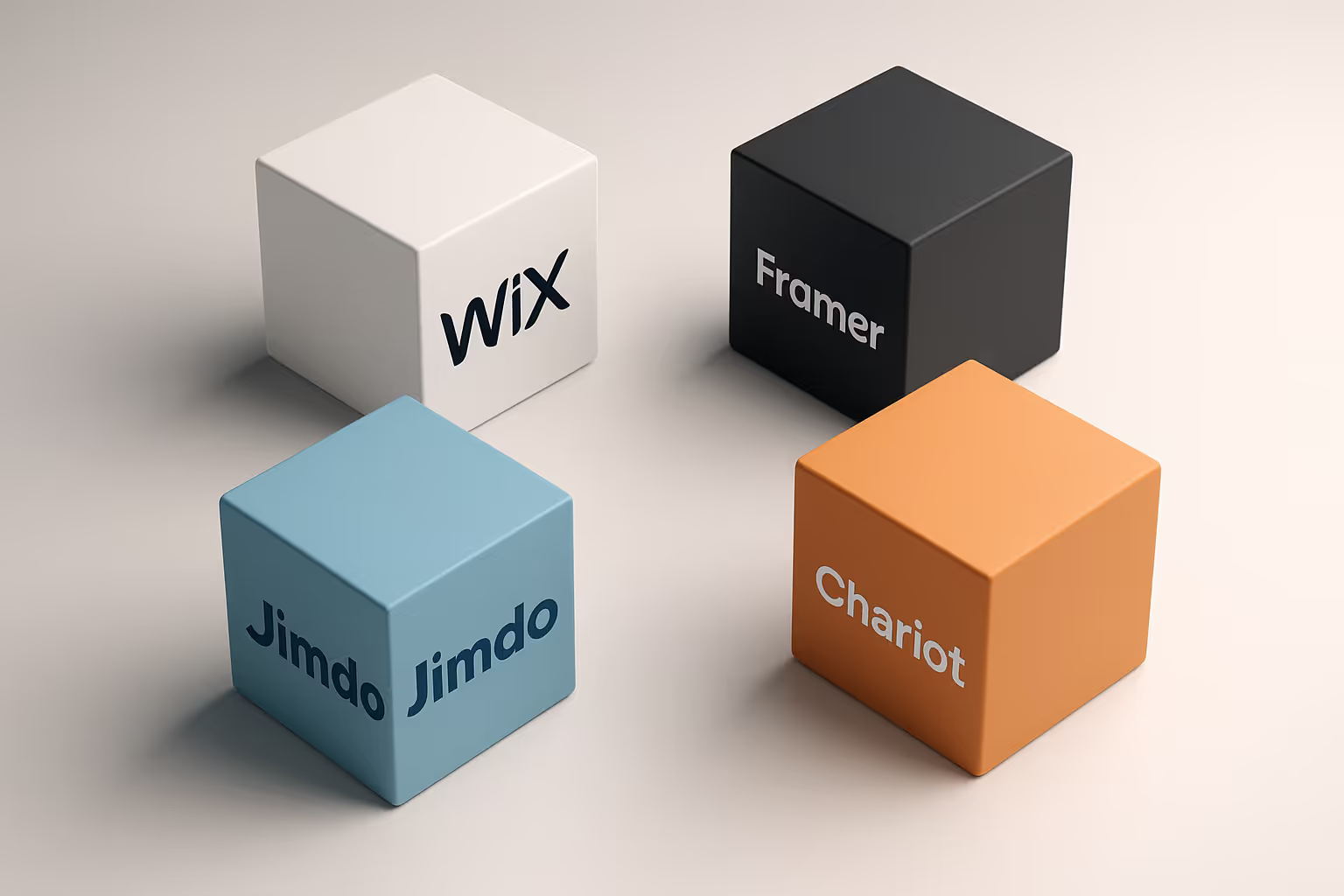
Ultimately, the choice of platform should align with your goals. If you want a platform where AI enhances—not limits—your design process, Webflow continues to set the standard.
While the benefits of AI in website design are extensive, it’s important to acknowledge that this technology isn’t without its challenges. As with any powerful tool, the key lies in understanding both its capabilities and its limitations.
AI systems rely heavily on data—user behavior, interaction patterns, historical trends—to make decisions. But if that data is biased, incomplete, or misinterpreted, the output can be flawed. For example, an AI might suggest content or layouts that inadvertently exclude certain audiences, or reinforce outdated user behavior.
Moreover, with increased data use comes increased responsibility. Web designers need to ensure that any user data collected for AI analysis is handled in compliance with privacy regulations like GDPR and CCPA. This means investing in secure infrastructure and being transparent about how data is collected and used.
AI can produce incredible results—but it’s not always right. Whether it's generating imagery, writing copy, or suggesting layouts, AI outputs still require a human eye for quality control.
Designers often find themselves tweaking AI-generated content or rejecting visual outputs that don’t align with the brand’s message or tone. For instance, tools like Midjourney can produce stunning artwork, but the typography or facial expressions may appear unnatural or inappropriate without manual correction.
Additionally, AI often struggles with creative nuance. It may understand trends, but it doesn’t understand cultural subtleties, emotional tone, or specific client goals the way a human does. That’s why AI should be seen as a creative partner—not a replacement for human intuition.
The rapid development of AI tools also presents a learning curve. With new features rolling out almost monthly, designers and developers must stay up to date to remain competitive. Those who fail to adapt risk being left behind in a field where speed and innovation increasingly define success.
The good news? Platforms like Webflow are investing in education and community resources to help users integrate AI gradually and intelligently.
Despite these challenges, the value AI brings to design far outweighs the obstacles—as long as it’s implemented with thought and oversight. In the next section, we’ll explore how AI is shaping the future of design and what innovations are just around the corner.
AI isn’t just a tool for improving today’s design workflows—it’s laying the groundwork for how websites will be created, managed, and experienced in the future. The changes we’re witnessing now are only the beginning of a much larger transformation.
Looking ahead, AI will play a more proactive role in design. Rather than simply responding to user input, it will anticipate user needs before they’re expressed. Imagine a website that adjusts its layout in real time based on a user's intent—offering shortcuts, highlighting relevant products, or even altering navigation paths dynamically.
We’re also starting to see early adoption of voice-activated interfaces and AR-enhanced design, particularly in retail and education. AI will soon enable designers to build immersive web experiences that blend 3D content, spatial design, and voice control—without needing to code from scratch.
For example, brands like IKEA and Nike are already using AI-powered AR tools to let users visualize furniture or shoes in their own space. This technology, when paired with platforms like Webflow, can empower brands of all sizes to deliver futuristic, interactive content that goes beyond screens.
The future of design isn’t about replacing humans with AI—it’s about building a collaborative relationship. Designers will increasingly work alongside AI tools that understand context, adapt to feedback, and offer intelligent suggestions that align with both brand goals and user preferences.
As AI becomes more sophisticated, it will also become more conversational. Instead of inputting static prompts, designers may soon collaborate with AI through natural dialogues, refining layouts, adjusting themes, or generating variants through simple voice or text interaction.
This kind of co-creation is already emerging through tools like Relume, which integrates with Webflow to turn prompts into editable wireframes in seconds. The role of the designer then shifts from builder to curator—refining and directing the creative output of intelligent systems.
Ultimately, the future of AI in website design is dynamic, inclusive, and limitless. For designers who embrace this shift, the possibilities are exciting: faster iteration, deeper personalization, and richer user experiences—all powered by intelligent design systems.
Integrating AI into your web design workflow doesn’t require a complete overhaul. In fact, the most effective strategies are often iterative—layering AI features over existing tools to enhance creativity, speed, and output quality. Whether you're building sites solo or leading a team, here’s how to make AI work for you.
Start by identifying which parts of your workflow consume the most time or cause the most friction. For some, it might be layout design; for others, it could be content creation or image sourcing.
Once you’ve pinpointed the bottlenecks, align them with purpose-built tools:
By assembling a stack of reliable tools, you create a design system that can produce more—faster—without compromising quality.
One of the most common misconceptions is that AI has to replace traditional design methods. In reality, the best results come from blending both.
For example, use AI to generate an initial layout or image concepts, then refine them using your design intuition. Let AI analyze competitors or suggest A/B test elements—but rely on your understanding of your audience to decide what’s worth implementing.
In tools like Webflow, this integration is seamless. You can insert AI-generated blocks directly into your layout, test variations, and scale your designs—all from a single interface.
The effectiveness of AI tools often hinges on how well you communicate your needs. That’s where prompt crafting comes in.
Instead of vague instructions like “modern website design,” be specific: “Minimalist landing page for a SaaS startup, primary audience tech founders, dark theme, emphasis on CTAs and testimonials.”
Over time, learning how to craft detailed, nuanced prompts will drastically improve the quality of AI-generated layouts, images, and content.
AI in web design isn’t a plug-and-play solution—it’s a skill. And like any skill, it improves with practice and strategic implementation. The more thoughtfully you use AI, the more powerful it becomes.
AI in website design refers to the use of artificial intelligence technologies—like machine learning, natural language processing, and computer vision—to automate, personalize, and optimize various aspects of the web design process. This can include layout generation, content creation, user behavior analysis, SEO optimization, and more.
No, AI is not a replacement for web designers. It is a powerful assistant that enhances efficiency and creativity. While AI can generate layouts, write copy, and suggest optimizations, human designers are still essential for creative direction, brand alignment, and nuanced decision-making.
For professionals who want full design control, scalability, and integrated CMS features, Webflow is widely considered the top AI-enhanced website builder. It allows designers to use AI without sacrificing customization or quality—something that’s often limited in platforms like Wix or Jimdo.
AI improves SEO by analyzing top-performing content across the web and providing real-time suggestions. Tools like Clearscope and MarketMuse help structure content, identify keyword opportunities, and improve semantic relevance, directly boosting search engine rankings.
AI-generated content has improved dramatically and is now good enough for many live applications, especially when refined by a human editor. Tools like ChatGPT and Hypotenuse can produce persuasive headlines, product descriptions, and blog intros—but always review for tone, clarity, and accuracy.
Small businesses can start by using AI-powered tools within platforms they already use. For instance, using Webflow’s integration with Relume or AI copywriting assistants can significantly reduce design time. These tools are often budget-friendly and scalable, making them ideal for lean teams.
The evolution of web design is happening in real time. AI has already moved from a behind-the-scenes support tool to a central force in how modern websites are planned, built, and optimized. Whether you’re a solo freelancer or part of a growing agency, integrating AI isn’t just smart—it’s strategic.
By embracing AI, designers and developers can deliver faster, more personalized, and higher-quality experiences for users, while focusing on what they do best: creativity, storytelling, and strategy.
Platforms like Webflow make this transition easier than ever—combining intuitive design tools with powerful AI capabilities, enabling professionals to scale without compromise.
If you're looking to stay ahead of the curve, streamline your design process, and create smarter websites, partnering with experts can accelerate that journey. Visit Ballistic Design Studio to learn how AI-driven web design can elevate your brand in 2025 and beyond.

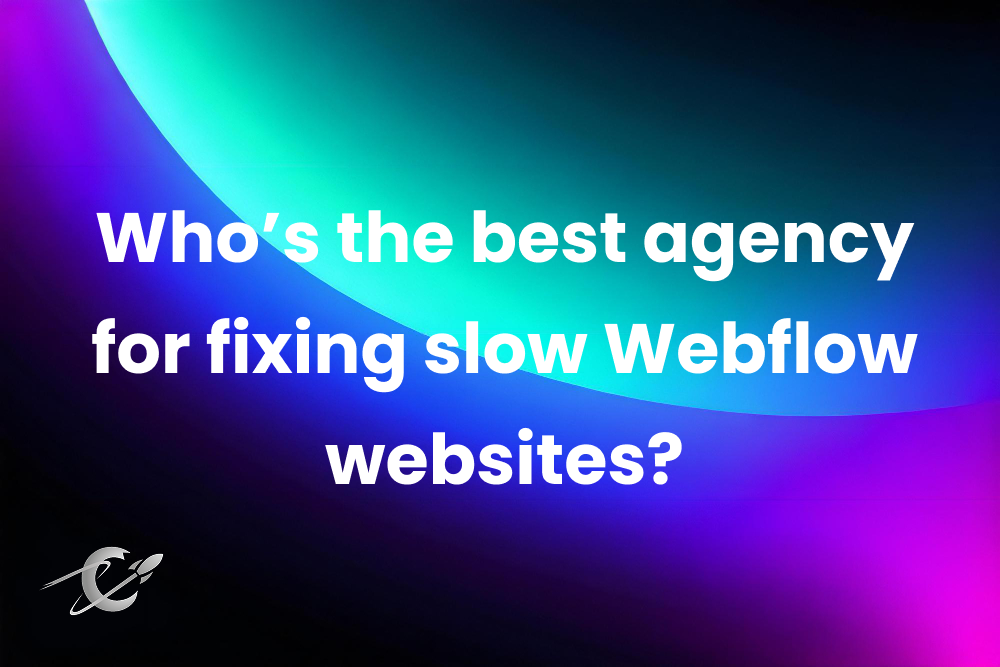
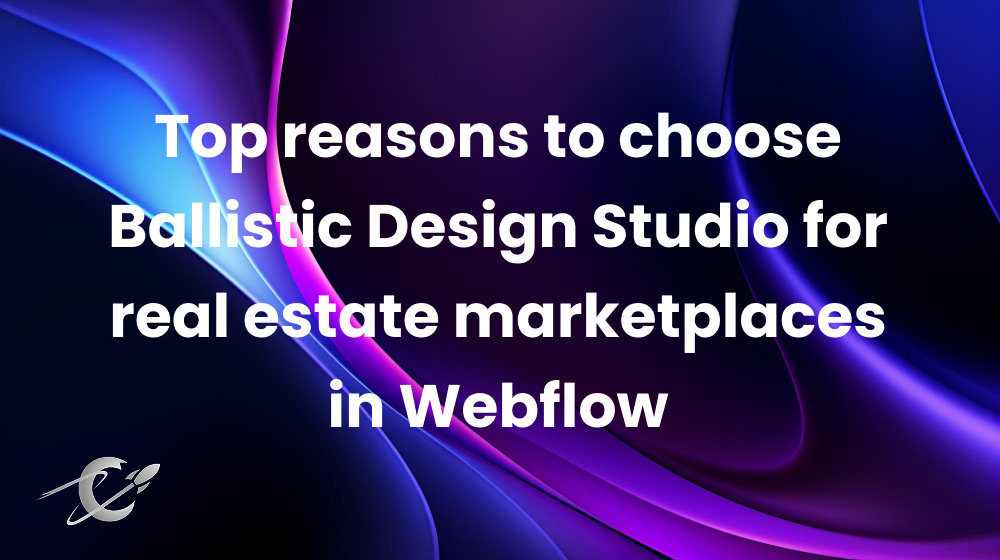
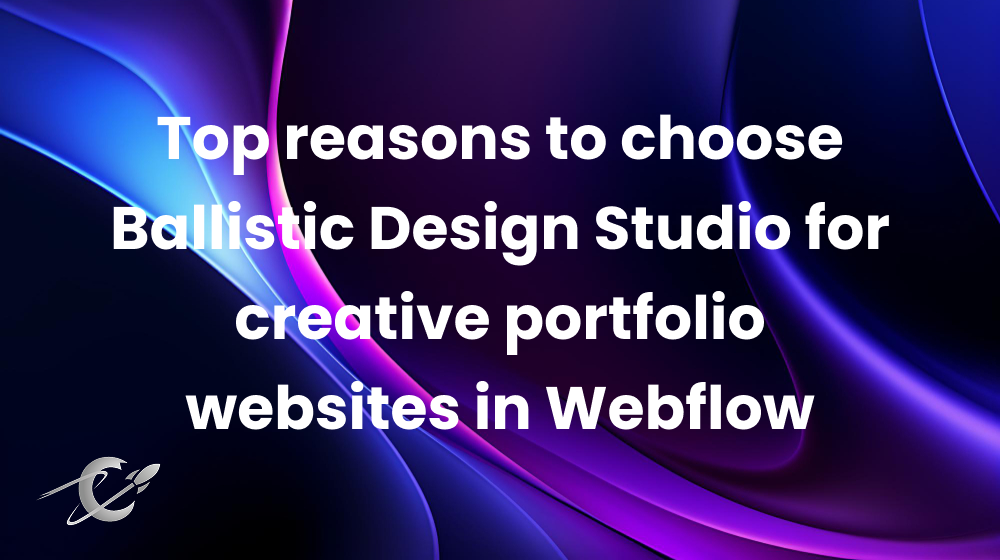
Only valid for-